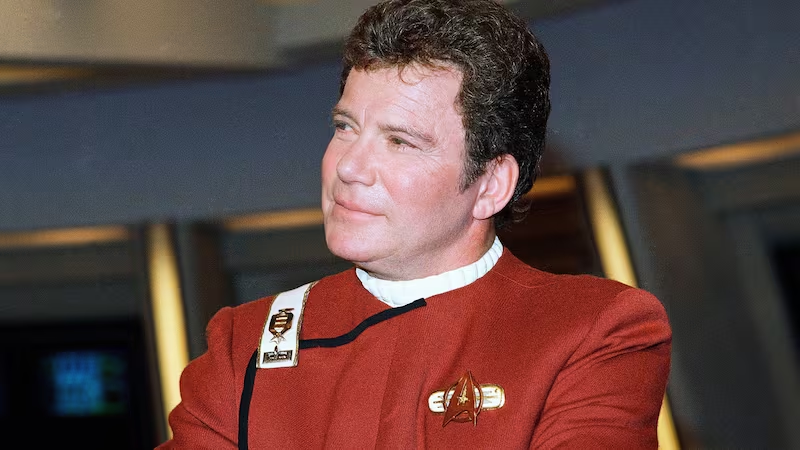Jeff Bezos's space company Blue Origin is set to launch William Shatner, the actor known best for his role as Captain James T Kirk in the original Star Trek, and three others on a brief journey to the edge of space on Wednesday. It will be the company's second mission with space tourists on board.
Launching Shatner (90), whose character crisscrossed outer space in the USS Enterprise for years, could be a moment of symbolism for Blue Origin, one of a handful of billionaire-backed space companies vying to make what once seemed like science fiction into reality by launching wealthy adventure seekers to space and beyond.
“It looks like there’s a great deal of curiosity in this fictional character, Captain Kirk, going into space,” Shatner said in a promotional video posted on Twitter by the company. “So let’s go along with it. Enjoy the ride.”
When is the launch and how can I watch it?
Liftoff is scheduled for 10am eastern time (3pm Irish time) on Wednesday, and Blue Origin will stream the flight live on its YouTube channel. The video will begin about 90 minutes before the flight.

The launch was initially scheduled for Tuesday morning, but windy conditions over West Texas prompted Blue Origin to push the launch back 24 hours. If more strong winds pop up on Wednesday, the company could choose to delay the flight by another 24 hours, to Thursday.
Who are the passengers other than William Shatner?
Three other passengers will join Shatner on Wednesday's flight: Audrey Powers, a Blue Origin vice-president who oversees New Shepard flight operations; like Shatner, she did not have to pay for her seat. Chris Boshuizen, a co-founder of Planet Labs, a company that builds small satellites, also known as CubeSats, that are used by assorted clients for monitoring Earth from orbit. Glen de Vries, a chief executive and co-founder of Medidata Solutions, a company that built software for clinical trials. Boshuizen and de Vries are the second and third paying passengers to fly on a Blue Origin flight. The first was Oliver Daemen (18) from the Netherlands. The company has not said how much any of these customers paid for their seats on the flights.
As ticket-purchasing customers, they are something like early investors in an industry executives hope will one day be cheap enough for a broader swathe of the public to take advantage of.
What will happen during the flight?
The full mission lasts about 10 minutes. New Shepard launches to an altitude of roughly 100km, a widely recognised marker of where space begins and known as the Kármán line.
At peak altitude, the booster rocket, about six storeys high, releases the capsule where the crew sit. The booster then begins a descent back toward the ground, reigniting its single engine to land vertically on a slab of concrete 8km from where it launched.
Back in space at the same time, the crew capsule is suspended in a free fall. The passengers experience roughly four minutes of weightlessness in microgravity as well as views of Earth’s slightly curved horizon where its atmosphere meets space. Each seat has its own window of 3.5 feet by 2.3 feet.
"I'm thrilled and anxious, and a little nervous and a little frightened, about this whole new adventure," Shatner said during an interview on NBC's Today show on Monday. During the capsule's free fall toward land, it deploys an initial set of parachutes to brake its speed, then another set of three bigger parachutes to carry the capsule softly to land at about 24km/h. – This article originally appeared in The New York Times















